Netherlands: How shipyards are dealing with the changes in the superyacht industry
Sören Gehlhaus
· 11.09.2025
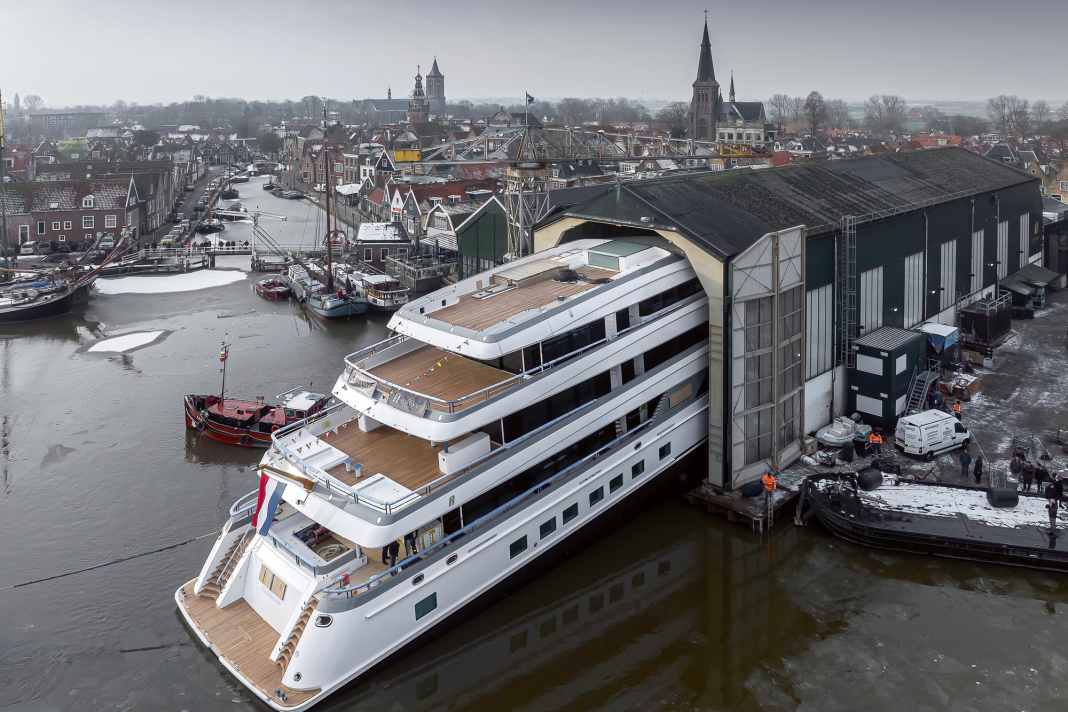





World Boating Day on 25 May was a good occasion to visit seven shipyards in the Netherlands. Full halls and quays were mostly the result of orders received during or shortly after the coronavirus period. Many came from the USA, where the Dutch yacht industry traditionally has strong sales. Another constant was always the spec business. This went so well that yachts launched "on spec" were rarely finalised without an owner in the past. The market for these "turnkey" new builds is now well-filled and lucrative for buyers. On the one hand, there are more and more pre-financed projects from Italian shipyards, and on the other hand, there is a general reluctance to buy. How the superyacht industry between the IJsselmeer and Westerschelde is dealing with this.
Royal Hakvoort
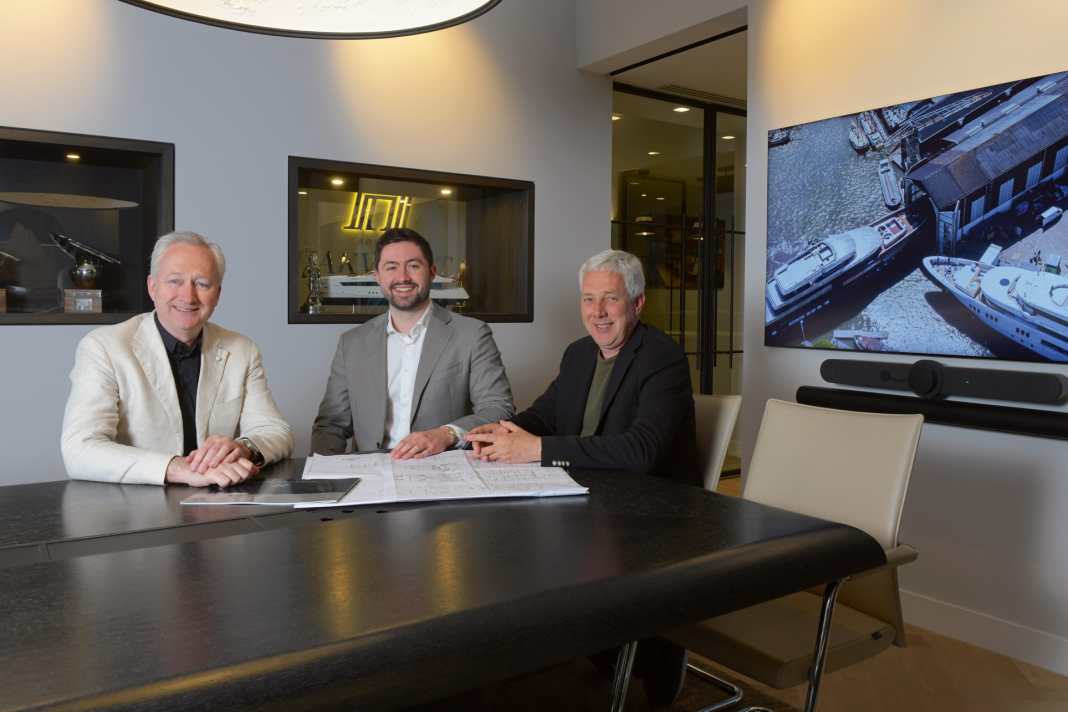


In Monnickendam, Albert Hakvoort and his son welcome you to the reception building, which was renovated three years ago and is designed like a yacht, with the construction department adjoining. Opposite, lush green hall doors with mullioned windows provide a view of what Royal Hakvoort is all about: Nostalgia. Founded in 1919, the shipyard has been expanded four times, most recently in 2019, and blends in only too well with the medieval old town. The iron-framed harbour crane stands opposite the flat-bottomed ships that Albert senior built for local fishermen.
The two slipways are currently occupied by new buildings for owners from Taiwan and the Middle East: 65 metres and 45 metres, both maximum dimensions for the halls and the harbour basin, which is limited aft. "But no bridge or lock separates us from the Markermeer," jokes Albert Hakvoort. Ramps are used to descend on rails, which can take up to three hours. The second-generation shipyard manager remembers how his father told him when he was young to quickly build the 64 steel wheels for the Helling wagon. In the end, it took him one day per wheel. Sinot developed the 65 metres on the basis of its 61-metre platform, which was built three times by Hakvoort. The flagship with a proud 1,435 gross tonnes took three years to build, albeit after delivery of the hull, which was always supplied by external parties.
The counter programme can be seen next door, a day cruiser with sleek lines by Andre Hoek, reminiscent of efficient sailing yachts and enclosing a cubature of just 380 gross tonnes. The steel suspension of the engines is the same, as Albert Hakvoort emphasises: "Our great strength is engine rooms, that's what we're known for." The credo: contain vibrations at source and keep noise levels low. Stainless steel work such as anchor pockets, hinges, external staircases and even fireplaces originate from a separate building. It comes as no surprise that Hakvoort was given the addition "Royal" in 2020. In the Netherlands, this is only awarded after 100 years and a thorough examination. The king has the final say.
Royal Huisman
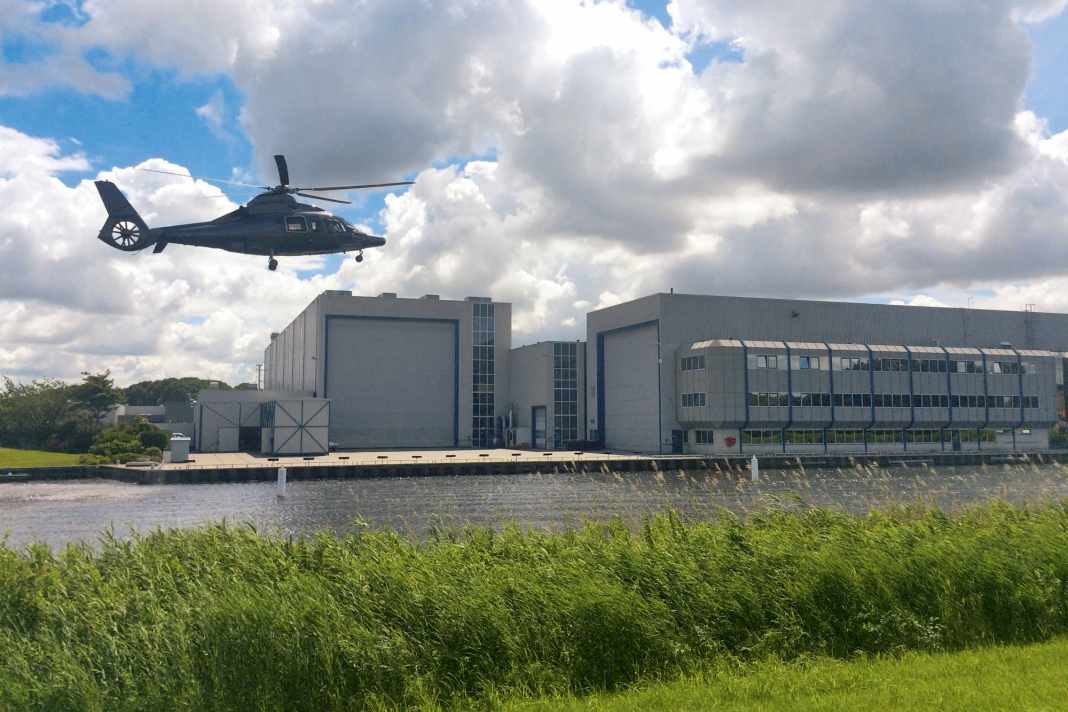





With over 350 employees, Royal Huisman is still the most consistent of the Dutch shipyards in its approach to manufacturing. The production facility in Vollenhove covers an area of 30,000 square metres and extends so deep inside that escalators connect three levels. Huisman is also one of the few companies that use exoskeletons in production; for hot work, these are models from the German prosthesis manufacturer Ottobock. The yacht builders have been welding their hulls from aluminium for 60 years.
Royal Huisman does not leave the interior out of its own hands either, even creating the pipework, piping and most of the technical systems itself. Composite parts and sail systems come from its neighbour Rondal. The subsidiary laminates the mast of the 8-metre Project 410 in one piece: the diameter is increased layer by layer, and again and again it goes into the oven, which has been extended from 62 to 95 metres, where the carbon spars are tempered at 100 degrees. Details of the world's largest slup were not given, but the mast does not break the 100 metre mark. Neither will the next major project. A Huisman customer placed an order for an XXL sailboat, which is listed under project number 412 and is to have a length of 80 metres plus.
Sales specialist Peter Naeyé explains: "It will be an SAP, a Sail-Assisted Powerboat. We want to appeal more to motor yacht owners with even simpler sailing systems." There was no information on the construction progress of the 81-metre project 411 "Noir", which the shipyard announced at the beginning of 2024. But it did say something about the clientele: "65 per cent of our orders come from returning customers. For some, this is the fourth yacht from Royal Huisman," reports CEO Jan Timmerman happily.
Oceanco
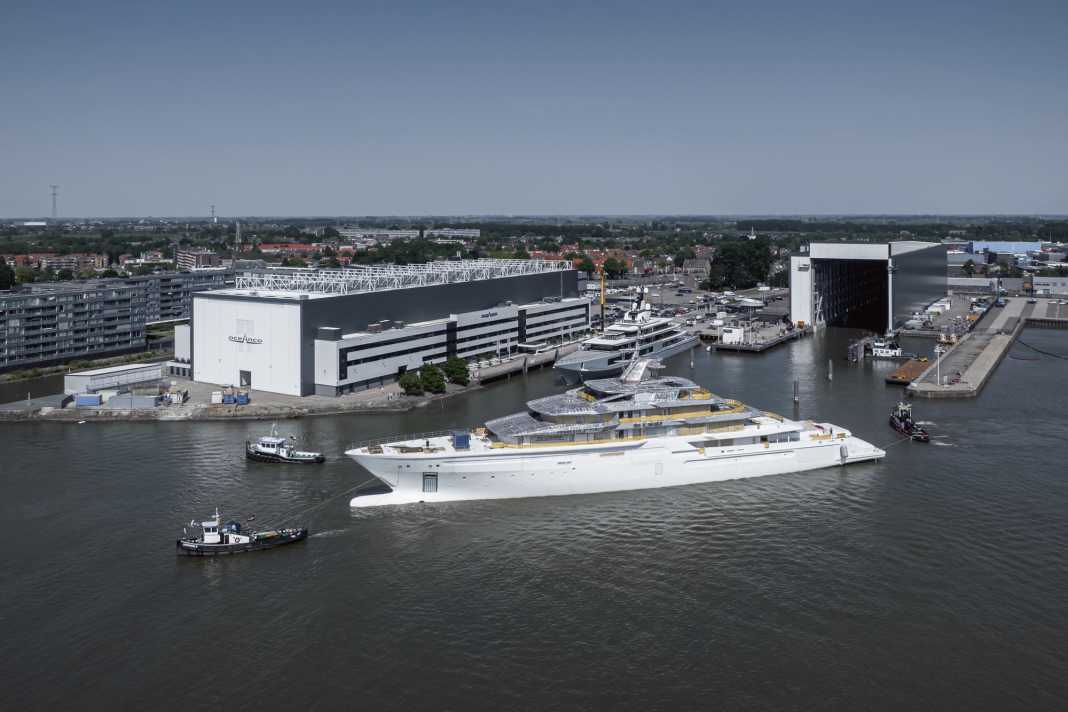



Outsourcing a large part of the manual work is the strategy pursued by Oceanco near Rotterdam. The company focusses on management and planning and maintains close contact with its many partner companies, the "co-makers". CEO Marcel Onkenhout emphasises the social component: "The construction of a yacht is 70 to 80 percent human labour, and we enter into a close relationship with our partners for up to five years." Or shorter.
This is because Oceano's refit orders, which are processed exclusively at the Zwijndrecht site acquired in 2019, are increasing. The 204 metre long and 38 metre high hall, in which the ten-year-old Tranquility stands scaffolded, is dedicated to life cycle support. In the centre, duplex steel for hull openings is welded in a small tent. Hulls are also built in Zwijndrecht, currently for the first unit from the "Simply Custom" cosmos. Customers can choose from exteriors by 28 designers, which are based on a pre-constructed 80-metre platform. Espen Øino's "Clarity" won over an owner who saved around nine months of construction time and a considerable amount of money compared to a full custom project. The finished metal hull is towed across the Oude Maas to Alblasserdam, a good five nautical miles away, where Oceanco operates a fully air-conditioned dry dock, which, like a humidor, keeps the temperature and humidity constant at all levels.
Shortly before delivery, two 111 metre boats were ready for the shipyard visit: Y726 with lines from Espen Øino International and Y722 from the computers of the in-house design team based in Monaco. The latter arrives dry jacked up, with the 1.8 tonne anchor chain on the flank ready to reach the capstan. Aft are electric pod drives, which Oceanco now exclusively realises for new builds. A vacuum crane from German pane manufacturer Tilse sucks up to two tonnes of laminated glass onto the decks. Many a surprise awaits inside. There is actually no crew mess - the crew dine in the same room as the owners and guests. Esthec is moored on deck so that the crew are less occupied with maintenance and can devote themselves to other tasks. A special request from the owner occupies the foyer, where a glass panel with engraved names pays tribute to those who were directly involved in the construction.
Vitters
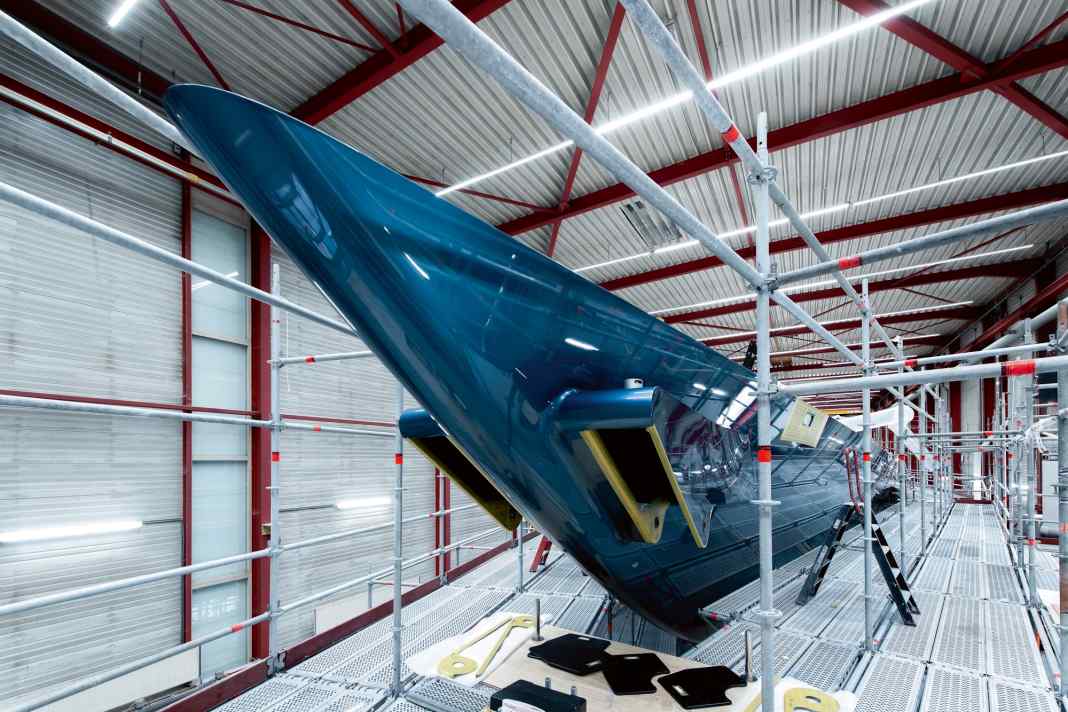



Vitters plays a special role by specialising in sailing yachts. And yet engine formats play a role, as the shipyard visit revealed. Project 3095, which measures 68 metres from the bow to the stern, will keep Vitters busy for three years. The contract for the ketch with lines by Andre Hoek was signed in September 2023. A good six months later, the Dutch company laid the keel for the aluminium hull in the new 80 x 30 metre hall in Zwartsluis. In May 2025, the 113-tonne hull rolled outside on a mobile self-propelled transporter to be turned by four mobile cranes. During the roughly one-year outfitting phase, three wood-panelled deckhouses will come on deck and amenities that are rather unusual for supersailors will be on board: a large cinema, two tenders in the foredeck and the crew area strictly separated from the guests indicate an owner from the motorised camp.
The construction site next door is still occupied by Project Zero. 60,000 hours of research and development work alone went into the almost 70 metre long ketch, which is expected to be greenhouse gas-neutral in the water and in operation by 2025. An aluminium hull 63 metres long will then take shape in its place. Malcolm McKeon developed the aluminium sloop with an interior volume of just under 500 gross tonnes and a 90 square metre flybridge. Project Dreamer, which should be a reality by the end of 2028, also appears to be conceptually similar to motor yachts.
Heesen
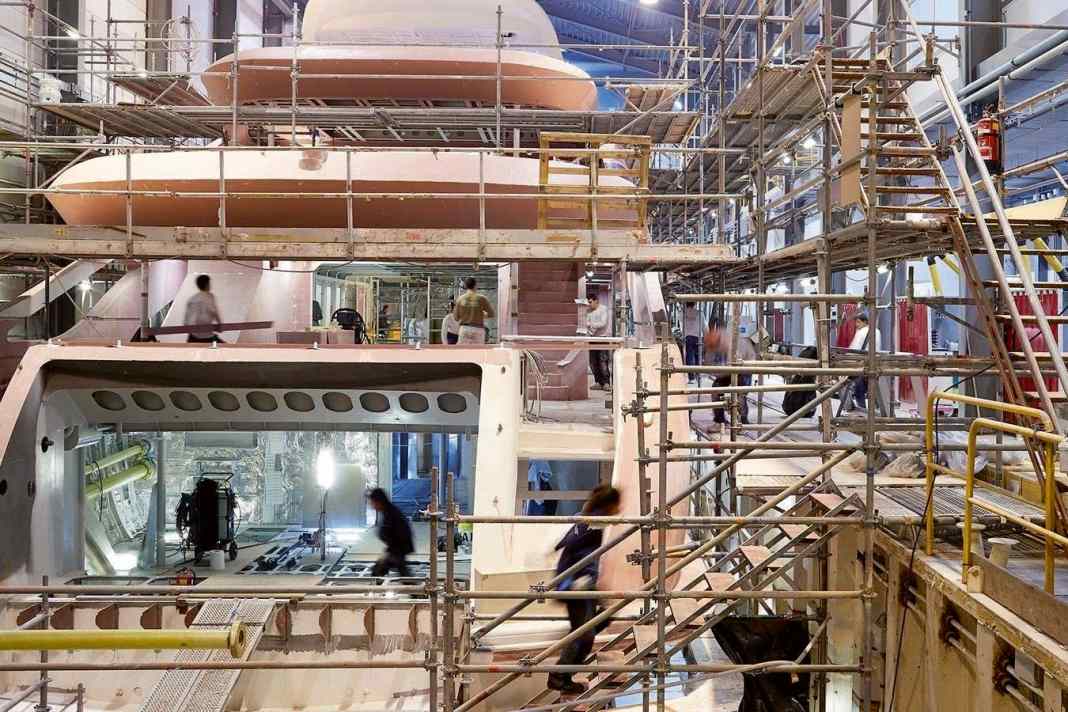




Among the Dutch large yacht builders, Heesen specialises most strongly in platform and spec formats. Eleven yachts are currently being built in Oss with deliveries until 2027. The term "series" covers calculated designs with predetermined lines of 50 to 57 metres, which are launched with or without customers. Four "Series" yachts were still available until the second quarter of 2027. Owners can also choose from hulls and customise them with individual superstructures. "Cinderella Noel" (50 m), which is visually very similar to an older steel model, is also considered a Smart Custom. Extensive modifications resulted from the desire to sail the yacht with a small crew and the owner as captain. Around one in four Heesen projects is based entirely on individual ideas.
Heesen welds aluminium in its own halls. The expertise goes back to Frans Heesen, who passed away in spring and quickly recognised the potential of light metal after founding the shipyard in 1978. Frans Heesen, who built the 53-knot "Octopussy" (44 metres) in 1988, was very much in the mood for "Ultra G". The solitaire left Oss in 2024 with four MTU gensets, each generating 4,359 kilowatts and capable of reaching speeds of up to 37 knots over 60 metres. Production manager Patrick Blom shows the hull frame of a 57-metre aluminium FDHF. For the "Santosha"-A total of five kilometres of weld seams have to be made on the new sister ship.
Visitors are also allowed to use the torches at Heesen and quickly realise from the test pieces that experience is what counts. Blom spent a long time looking for new recruits for his department and recently found seven new employees. Up to 1,000 people work for Heesen every day, soon to be supported by AI if Heesen's new owner Laurens Last has his way. The Dutch entrepreneur and investor wants to implement artificial intelligence in design, specification and production.
Amels
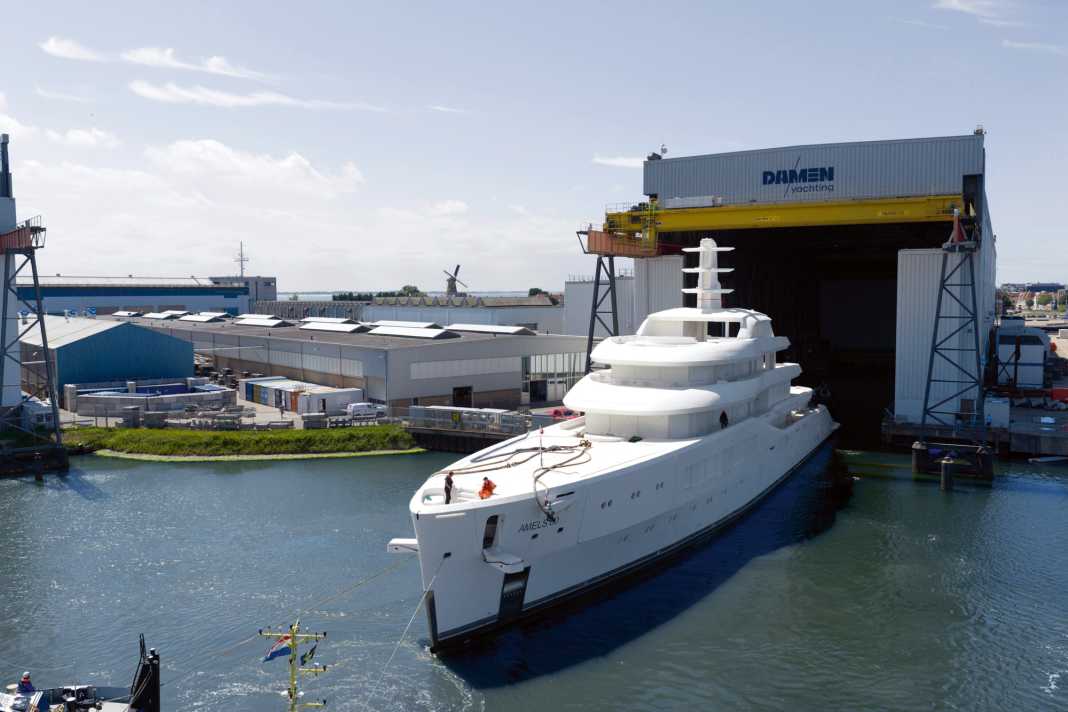



Even if it may be a bit of a metaphor, Amels occupies a niche: with yachts over 60 metres long from small series. Financial backing comes from the Damen shipyard group, which specialises in serial production and offers Amels the best conditions in Vlissingen. Ideally, eleven yachts will be built in parallel in the far south-west of the Netherlands, with up to 1,500 people working on them. The 340 quay metres will be supplemented by 120 metres in the direction of the lock, through which newbuildings can be quickly transported into the North Sea and steel-aluminium hulls into the halls.
The models designed by Espen Øino have their origins elsewhere: the Amels 60 in Gdansk - ten units since 2019 - and the Amels 80 in eastern Romania. Four of them have already travelled across the Danube and the Black Sea to Vlissingen, with two more to follow. Build numbers 3 and 4 are due to be delivered in 2026, while the fifth is still available, according to Sales Manager Jan van Hogerwou. Amels' "semi-custom model" approach also seems to work on 80 metres in length. As with the Limited Editions, the old name for the Spec division, it is also about process optimisation: the same processes should gradually lead to shorter construction times. "Our goal is to deliver one Amels 80 per year," says van Hogerwou. The 204 metre long dry dock will be occupied by the 120 metre long custom format project "Tanzanite" until the end of the year. And in Vlissingen-Oost, three nautical miles away, Damen is finalising the 195-metre-long "REV Ocean".
Feadship
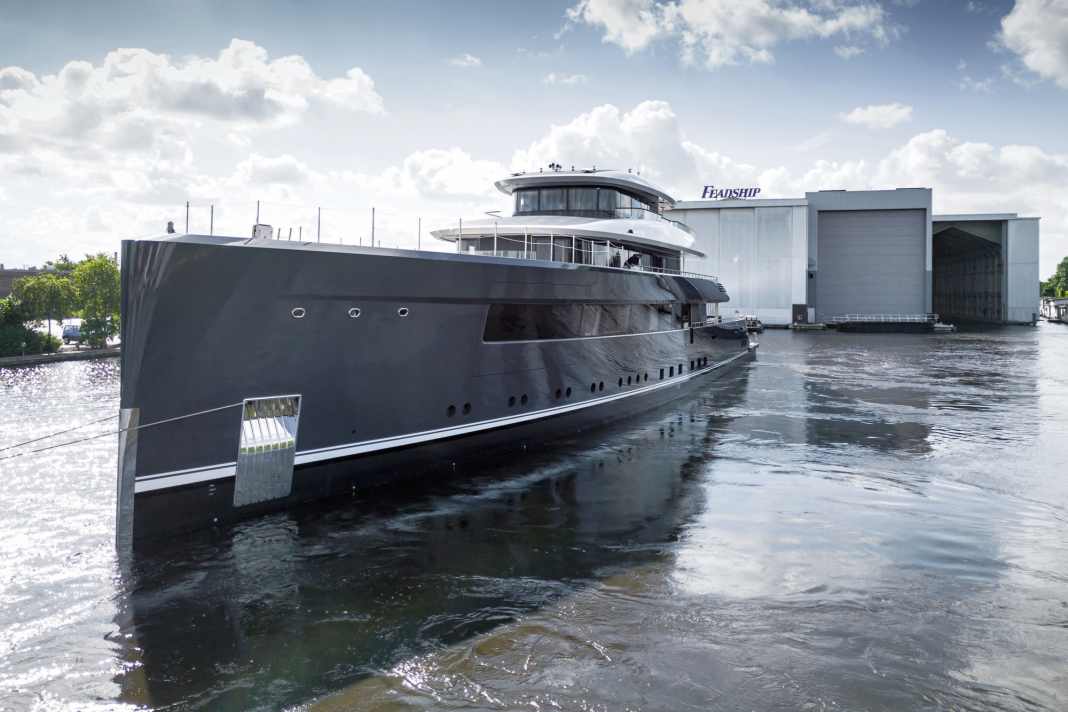


It was well known that the coronavirus period had filled the order books of many shipyards. Feadship's round of launches came as a surprise. Within just over a year, the Dutch company launched nine solitaires. Among the 780 metres in length was "Valor". "80 metres is a popular size," says Bas Nederpelt as he guides us past the 79.50 metre long explorer in Aalsmeer. "Valor's" main propulsion system consists of two azimuth thrusters from Schottel. "We only use diesel-electric drives," says the Commercial Director of the De Vries shipyard, which also builds in Makkum. At Feadship-Van-Lent, two yachts with diesel shaft configurations are under construction in Amsterdam and Kaag.
Feadship is also tackling projects without an owner, such as the one under construction next door with the identification number 717. The flat 49-metre aluminium yacht has the nickname "Bahamas Cruiser" and is due to set sail in March 2026 with powerful air conditioning and minimal draught. The custom market is also on the move, and Feadship is playing its part. The shipyard's own broker team found a buyer for the brand new "ONE" (76 m), last listed for 172.5 million euros. The change of ownership of "Savannah" (84 m) was also orchestrated. As part of a sales-promoting refit, the battery bank, which was huge by the standards of the time, was removed. And almost exactly ten years after the batteries with a total capacity of 1 megawatt hour were installed, batteries with a total capacity of 5 megawatt hours fitted into the same space. Feadship continues to rely on fuel cells for power generation, after "Breakthrough" a yacht with methanol as an energy source is also being planned.

